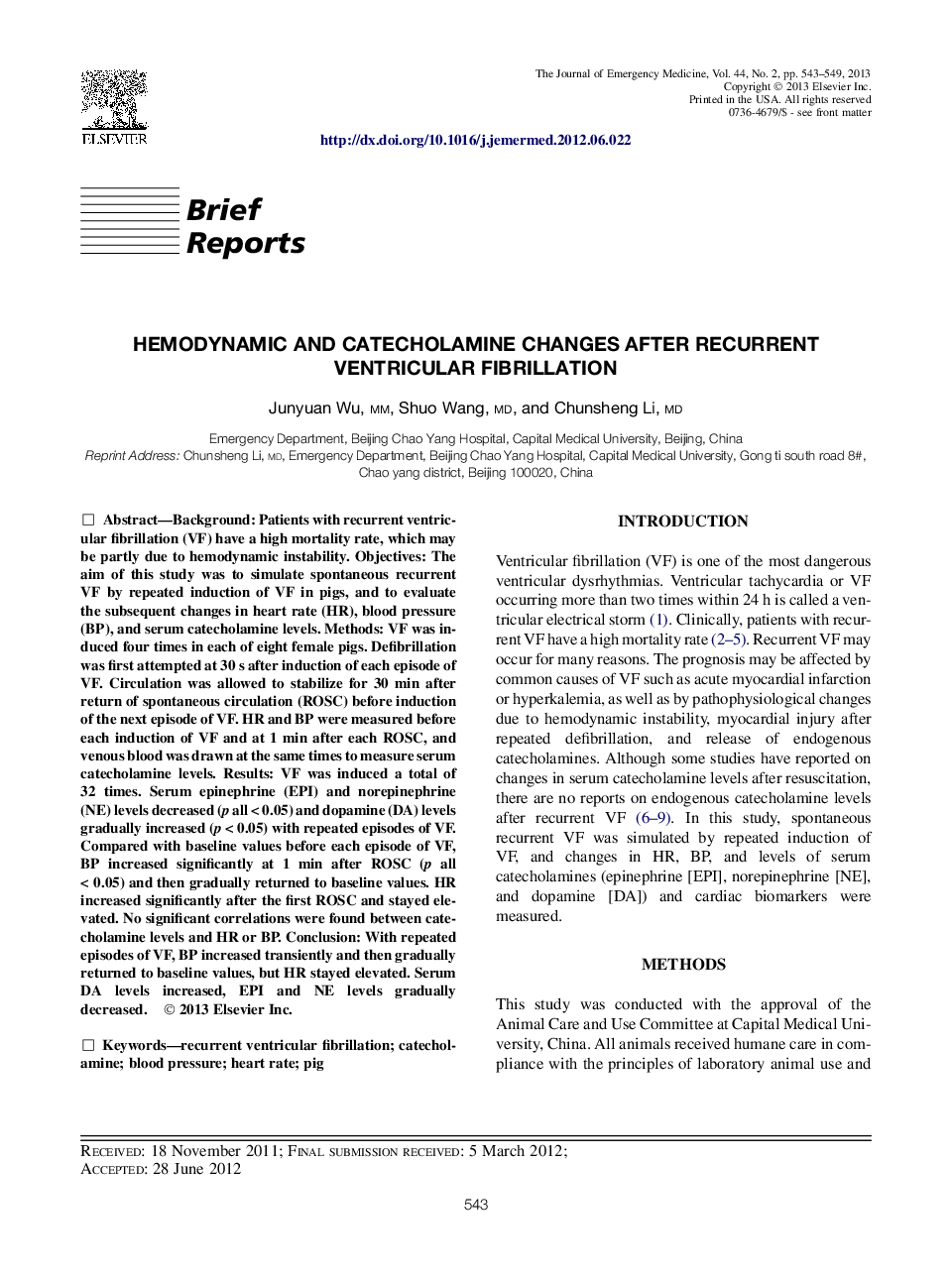| Article ID | Journal | Published Year | Pages | File Type |
|---|---|---|---|---|
| 3248342 | The Journal of Emergency Medicine | 2013 | 7 Pages |
BackgroundPatients with recurrent ventricular fibrillation (VF) have a high mortality rate, which may be partly due to hemodynamic instability.ObjectivesThe aim of this study was to simulate spontaneous recurrent VF by repeated induction of VF in pigs, and to evaluate the subsequent changes in heart rate (HR), blood pressure (BP), and serum catecholamine levels.MethodsVF was induced four times in each of eight female pigs. Defibrillation was first attempted at 30 s after induction of each episode of VF. Circulation was allowed to stabilize for 30 min after return of spontaneous circulation (ROSC) before induction of the next episode of VF. HR and BP were measured before each induction of VF and at 1 min after each ROSC, and venous blood was drawn at the same times to measure serum catecholamine levels.ResultsVF was induced a total of 32 times. Serum epinephrine (EPI) and norepinephrine (NE) levels decreased (p all < 0.05) and dopamine (DA) levels gradually increased (p < 0.05) with repeated episodes of VF. Compared with baseline values before each episode of VF, BP increased significantly at 1 min after ROSC (p all < 0.05) and then gradually returned to baseline values. HR increased significantly after the first ROSC and stayed elevated. No significant correlations were found between catecholamine levels and HR or BP.ConclusionWith repeated episodes of VF, BP increased transiently and then gradually returned to baseline values, but HR stayed elevated. Serum DA levels increased, EPI and NE levels gradually decreased.
